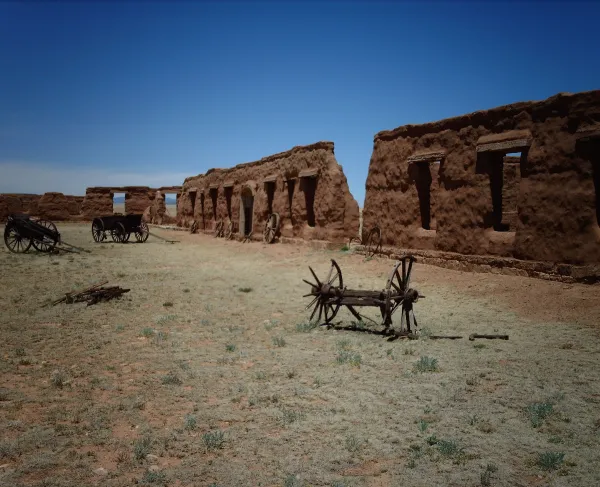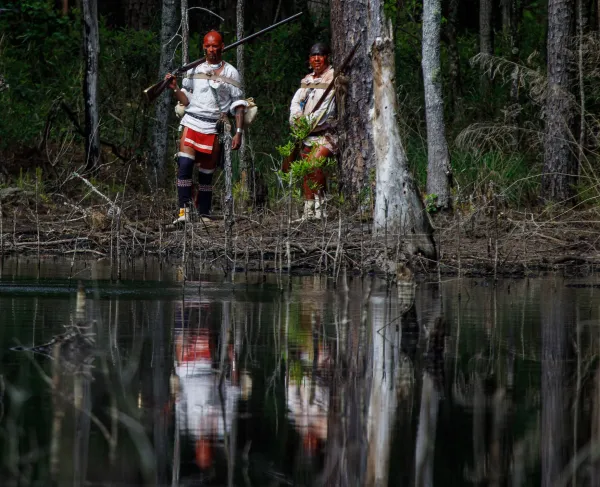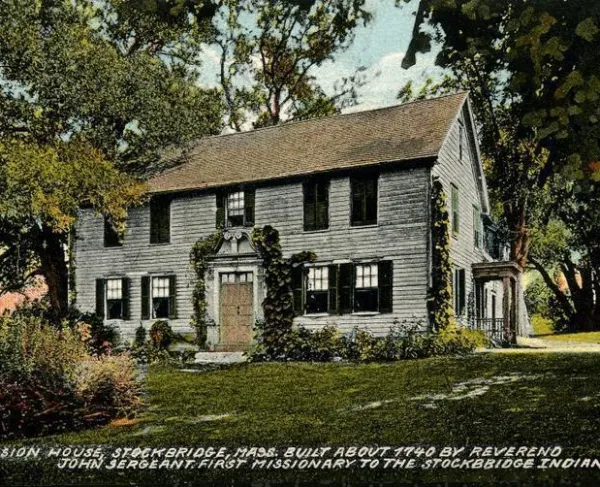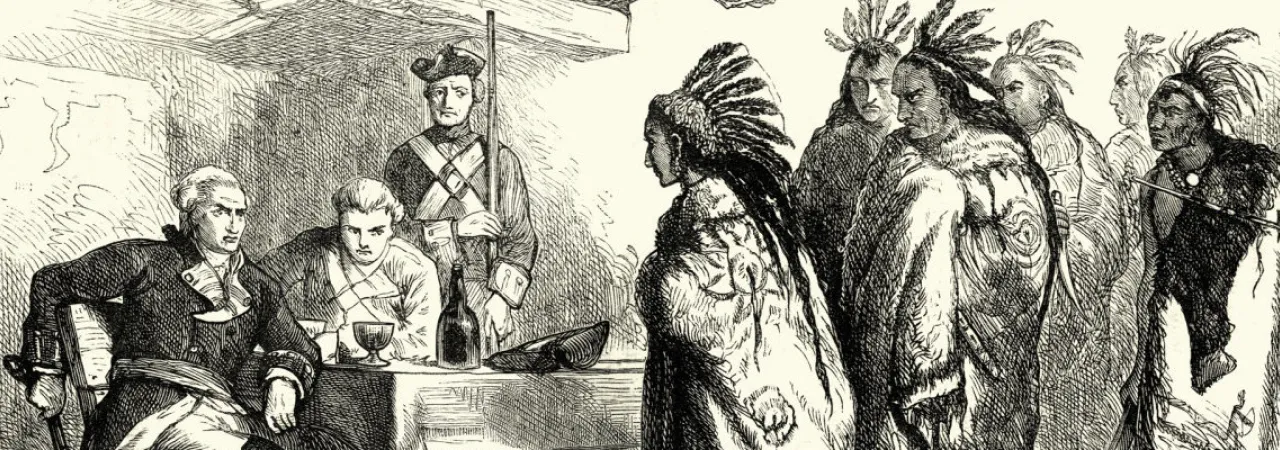
The framing of the American Revolution through the eyes of Native Americans has always been plagued with bias and misinformation. For historians and students, much of this is no fault of their own. Tribal groups rarely wrote anything down or kept records, and events are often depicted markedly one-sided by European narrators. What we can determine about the relationships between the various native groups who sided with either the British or the Americans are often told through Western texts and interpretations. Because of this, we’ve been left with a very narrow perception in many respects as to how and why specific Native American tribes sided with their white counterparts. Reasons for these alliances varied, some of which were decided by looking to the past, while others were made looking to the future.
When we look at the historical record and read the various accounts of how different groups chose the alliances they did, we are often left with portraits of people whose interests were wildly different. Even among the several nations of Native Americans, decisions on who to fight with or for often hinged on regional interests and those of their neighboring native groups. The same can be said from both the British and American perspectives. As the war progressed, both sides viewed the several groups of Native American tribes along the western borders and territories with a mixture of respect, opportunity, and fear. All are best explained through the eyes of military planners and governmental authorities who sought alliances that would further their causes: the British in repelling the insurrection and recalling western-minded settlers who had broken past treaties, and the Americans who sought alliances to promote a continental autonomy from European control. From these viewpoints, we can see the appeal of the British.
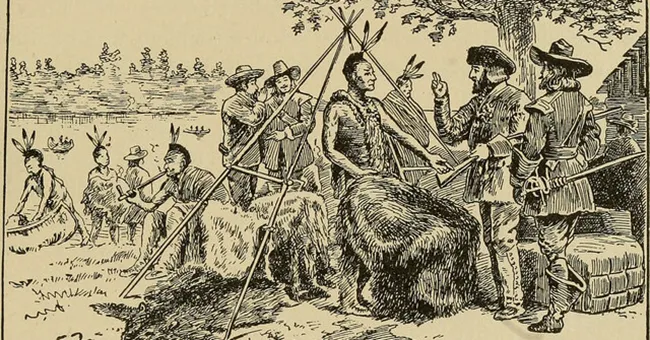
It is no surprise that most Native American groups sided with the British during the war. Recall, during the decades prior to the Revolution, both British and French entities were busy carving out alliances with Native groups to further their own regional gains over land and goods. The fur trade was among the most profitable industries in North America during the eighteenth century. The trapping, trading, and selling of furs was a lucrative business for both natives and their European counterparts, in the colonies and abroad. In the Seven Years’ War (French and Indian War), alliances were further entangled over which European power would better serve the lives and existence of American Indians. Powerful confederations, such as the Iroquois of New York, were among those courted by the British as a valuable ally.
Following the war, Parliament established the Proclamation of 1763 that effectively created a boundary line running through the greater Appalachian Mountains of interior North America. The boundary prohibited English settlers from moving farther west and encroaching on Native lands recognized by the British government. Many American settlers disregarded this agreement, and some American colonial politicians voiced outrage that such a deal prevented them from expanding their territories. By the time of the American Revolution in 1775, tensions were already high among Native Americans and American colonists. That London would seek to exploit this tension, not unlike how Royal governors tried to create slave insurrections, shows us that the British sough to completely disrupt the prospect of American independence.
The Americans were successful in courting a handful of Native American groups, particularly the Oneida. The majority, though, were allied with the British and waged war in the continental interior. Others sided with the Spanish along the southern Mississippi River region and harassed both British and Americans in the western regions of the South periodically through the war.
A few episodes of the extreme brutalities of war were not uncommon. The case of Jane McCrea being scalped by warriors attached to a British Loyalist assault galvanized Patriot support and helped lead to British Gen. John Burgoyne’s defeat at Saratoga in October 1777. Other barbarities towards natives at the hands of Patriot forces were reported too. Both sides resorted to striking fear into the hearts and minds of their adversaries, and cases of savagery, mutilation, and the murder of women and children occurred out of sight of the British and American regular armies. These were effective propaganda shows.
The American army sought to neutralize certain Indian tribes allied with the British. In 1779, Gen. Washington placed Col. Daniel Brodhead in charge of the Western Department, a sizable detachment of the Continental Army that attempted to eliminate the British and American Indian presence in modern-day Ohio and Michigan. Brodhead’s initiative, along with Maj. Gen. John Sullivan’s expedition in upstate New York, combined to eliminate many of the villages and home territories of the powerful Native groups.
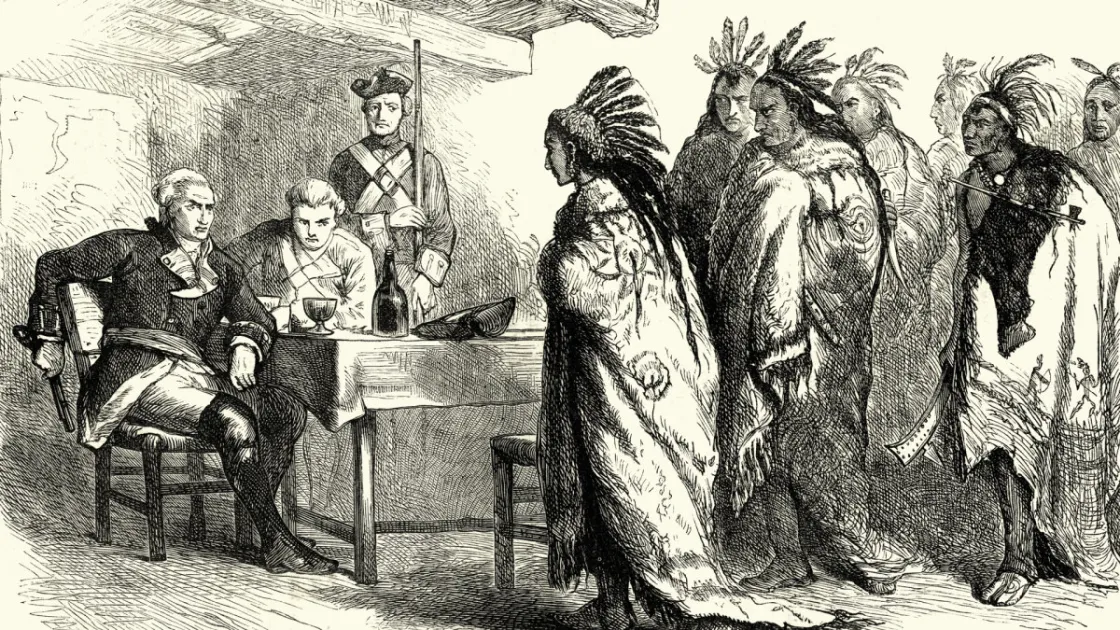
In many ways, the outcome of the American Revolution proved to be a double blow to the various Native American groups and nations east of the Mississippi River. Many had sided with the British. The American victory caused, however, the British to largely abandon any commitments made to their allies. Without British protection and disillusioned by how their alliance crumbled diplomatically, many Native Americans were subjected to immediate encroachment from western-minded Americans who held little sympathy for natives who had fought against them during the war. Those who did not fight back chose to seek legal treaties with the American government. Some progress was made, and there were moments of real promise that treaties respecting Native claims would be upheld. However, there is just as much evidence to suggest such treaties would have been impossible to enforce without an armed American presence.
The unique blend of cultures that walked the streets of the city of Philadelphia, the nation’s capital during the 1790s, brought Native Americans within contact of the young country’s leadership. Pennsylvania’s Lenni Lenape people had always been visible in the colony, and many remained to be seen within the new United States. President George Washington did meet with chiefs and tribal elders on several occasions, all who looked upon Washington to honor the agreements and treaties that had been made. For his part, Washington strove for a neutral stance that tried to balance the opposing sides of American Indian land claims, and that of the land claims of emerging American enterprises. Washington himself was the owner of lands in present-day West Virginia—then still deeply inhabited in parts by the Cherokee—and it was impossible for him to assert confidence in a peaceful solution. Ultimately, the Washington administration was faced with several conflicts in the Ohio territory. The rural southern territories had not been sought out by white settlers, yet; the Creek and Cherokee nations inhabited the areas that would become Georgia, Alabama, Mississippi, and western North and South Carolina. In 1791, Maj. Gen. Arthur St. Clair’s entire American division was wiped out by native warriors in modern-day Ohio. Embarrassed, the president replaced St. Clair with Maj. Gen. “Mad” Anthony Wayne, whose campaign culminated in the 1794 Battle of Fallen Timbers, largely acknowledged as the "last stand" of Native warriors from preventing American settlers pushing west to the Mississippi River and north beyond the Ohio River. With the final years of conflict giving way to American victories, land speculation, and claims to new territory expanded with little concern for who it might displace.
Further Reading
- Crucible of War: The Seven Years’ War and the Fate of Empire in British North America, 1754-1766 By: Fred Anderson
- Native Americans in the Revolution War By: Rebecca Beatrice Brooks
- The Indian World of George Washington: The First President, the First Americans, and the Birth of the Nation By: Colin G. Calloway
- A Spirited Resistance: The North American Indian Struggle for Unity, 1745-1815 By: Gregory Evans Dowd
- Narratives of Sullivan’s Expedition, 1779: Against the Four Nations of the Iroquois & Loyalists by the Continental Army By: John L. Hardenbergh
- The Seeds of Empire – The American Revolutionary Conquest of the Iroquois By: Max M. Mintz
- Native Americans in the American Revolution By: Ethan Schmidt
- The Divided Ground: Indians, Settlers, and the Northern Borderland of the American Revolution By: Alan Taylor
- Year of the Hangman: George Washington’s Campaign Against the Iroquois By: Glenn F. Williams

